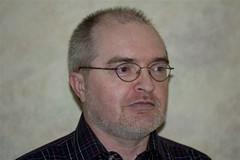
Back when I worked at Waterloo’s Seagram Museum from 1983 to 1988, I had the good fortune to make a trip with my wife to the Finger Lakes in New York. At that time, Taylor Wines was part of the Seagram stable, so we were able to stay at a chalet in the middle of one of the vineyards overlooking Keuka Lake near Hammondsport, N.Y. The scenery was spectacular and the wine wasn’t too bad either.
One of the reasons we made the trip was to learn more about the history of the vineyards and to examine the collections in the wine museums in the region. We also wanted to see collections at the Corning Museum of Glass and the Rockwell Museum of Western Art. The entire trip was one of our best vacations ever.
One of the surprises in visiting the Finger Lakes Wine Region was the Glenn H. Curtiss Museum in downtown Hammondsport. A good part of that museum deals with the early history of aviation, the topic of tonight’s EinsteinFest lecture by Peter Jakab from the Smithsonian Institution, the curator responsible for the successful The Wright Brothers: the Invention of the Aerial Age exhibition.
The lecture and slides were both quite good. Jakab did an excellent job of explaining to a non-specialist audience why the Wright Brothers made such an impact with their experiments in aviation. Unlike most engineers investigating the possibility of powered flight, the Wright Brothers knew they had to understand aeronautics, propulsion, and control – all three, not just one or the other. Their experiments finally led to an event almost exactly 100 years ago today in which they flew their experimental aircraft for a full 40 minutes, including turns and a passenger. Yes, the first flight was in Kitty Hawk in 1903, but the proof of their engineering was in October of 1905 in Huffman Prairie where they flew 24.5 miles.
So, what about Glenn H. Curtiss? He quickly went on to become the leading producer of aircraft in the United States before World War 1. But it was the Wright Brothers who set the engineering foundation for the aviation and aeronautics industries of the 20th and 21st centuries with their pioneering efforts.

No comments:
Post a Comment